How to Clean Wood Stove Glass & Keep It from Getting Black
Discover the best tips and tricks to clean and maintain your wood stove glass. Learn how to keep it clear, spotless, and cozy all winter!
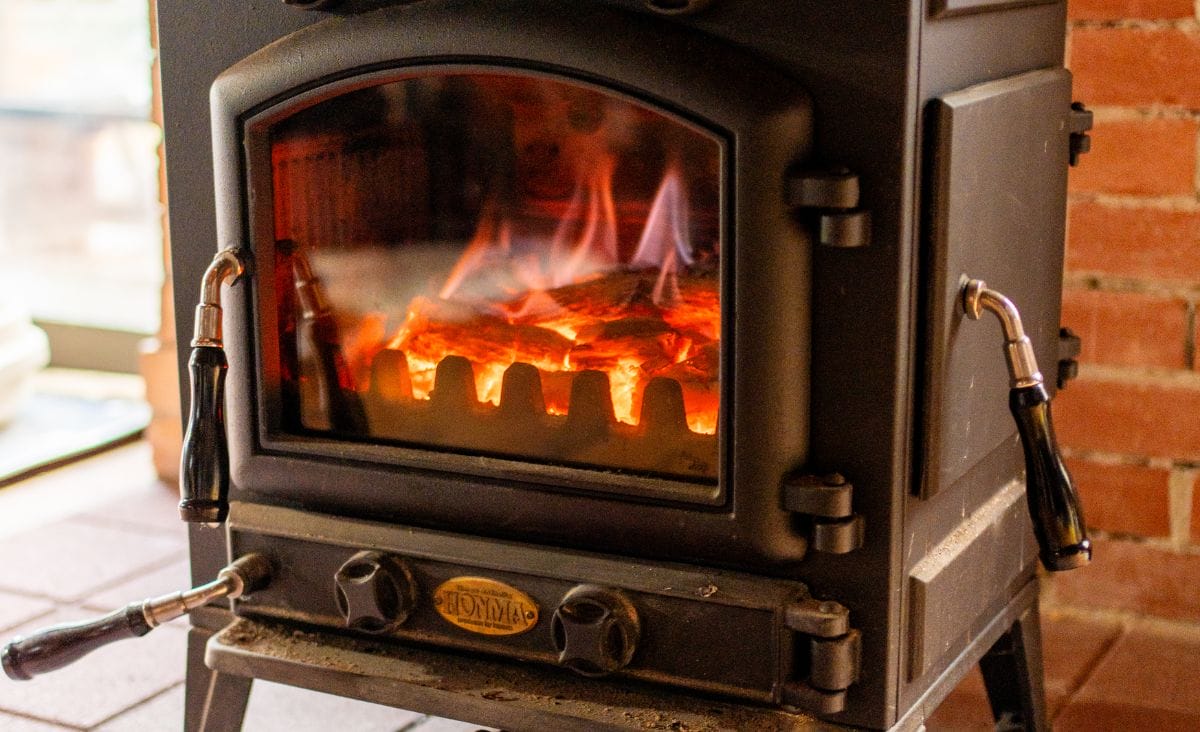
Is there anything more comforting than watching a roaring fire on a cold winter’s night? But when your wood stove glass is clouded with creosote and soot, it can ruin the cozy ambiance. Don’t let dirty glass block your view of the warm glow—restoring its clarity is easier than you might think.
In this post, I’ll show you how to clean creosote from wood stove glass and share practical tips to keep it spotless all season. Whether you’re dealing with tough soot buildup or looking for preventative measures, you’ll learn the best methods to clean and maintain your stove glass. Let’s dive in and bring that beautiful view of your fire back to life.
Why Does Wood Stove Glass Get Dirty?
Understanding why your wood stove glass gets dirty is the first step in keeping it clean. Here are the common culprits behind the blackened glass:
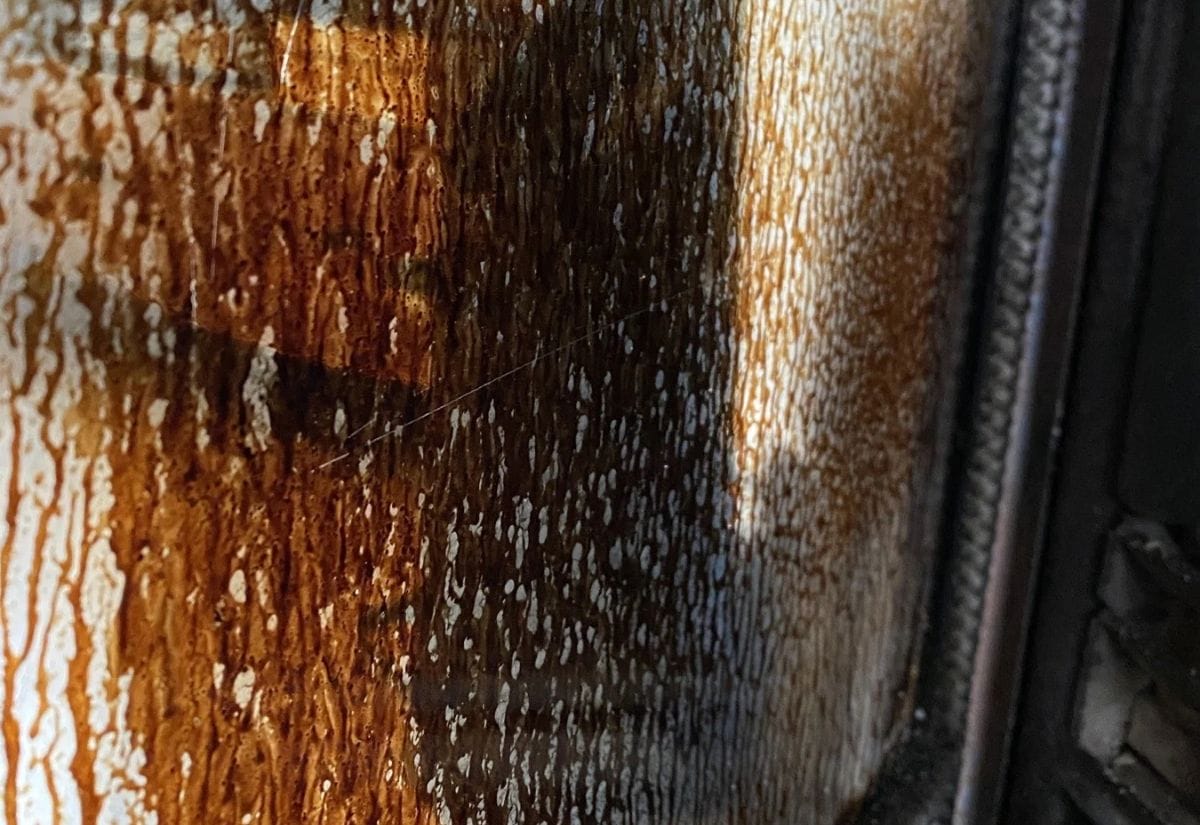
Unseasoned Wood
Burning unseasoned (or green) wood is a leading cause of creosote buildup. Green wood has high moisture content, which produces excessive smoke and residue when burned. Stick to properly seasoned wood to keep your glass cleaner longer.
Learn more about choosing the right firewood in The Best Firewood for Your Wood Stove or Fireplace.
Low Burn Temperatures
A smoldering fire—caused by burning wood at too low a temperature—creates creosote and soot that coat your glass. Keep your stove burning hot (around 1,100°F) to prevent this. Using a stove thermometer is a great way to monitor your burn temperatures.
Poor Draft
A weak draft can lead to smoky fires and dirty glass. Preheat your flue using tools like a hair dryer, a heat gun, or a candle before starting your fire to ensure a strong draft.
Removing Too Much Ash
Leaving a layer of ash—around 1 inch—helps insulate the fire and encourages cleaner burns. Excessive ash removal can lead to smoldering fires and soot buildup.
Air Wash Issues
Most wood stoves feature an air wash system to keep the glass clean. If air leaks from areas like the door gasket, the air wash won’t work as effectively. Perform a “Dollar Bill Test” to check your door seal and replace the gasket if needed: Take a dollar bill and close it in the door. If it stays in tight, your gasket is tight. If it pulls out easily, your gasket isn’t tight enough and may need to be replaced.
How to Clean Wood Stove Glass
Once your glass gets dirty, here are the most effective cleaning methods:
Wood Ashes & Newspaper
This eco-friendly method is my go-to!
- Gather wood ash from your stove and warm soapy water.
- Crumple a piece of newspaper, dip it in the soapy water, and then into the ash.
- Scrub the glass in circular motions until it’s clean.
- Wipe away residue with a paper towel.
Pro Tip: Add a splash of vinegar to your soapy water for extra cleaning power.
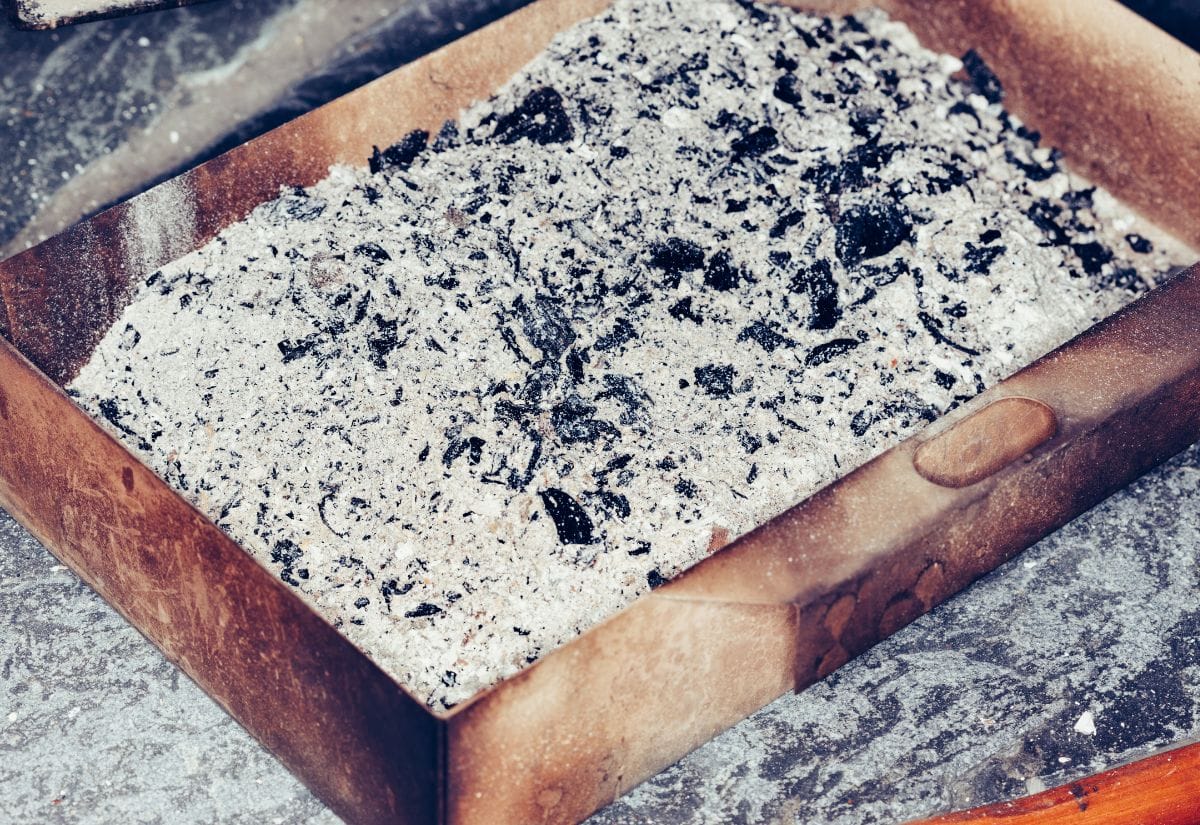
Baking Soda Paste
If you don’t have wood ash, make a paste of dish soap, baking soda, and water.
- Apply the paste with a newspaper or paper towel.
- Gently scrub the glass in circular motions.
- Wipe clean with a damp paper towel.
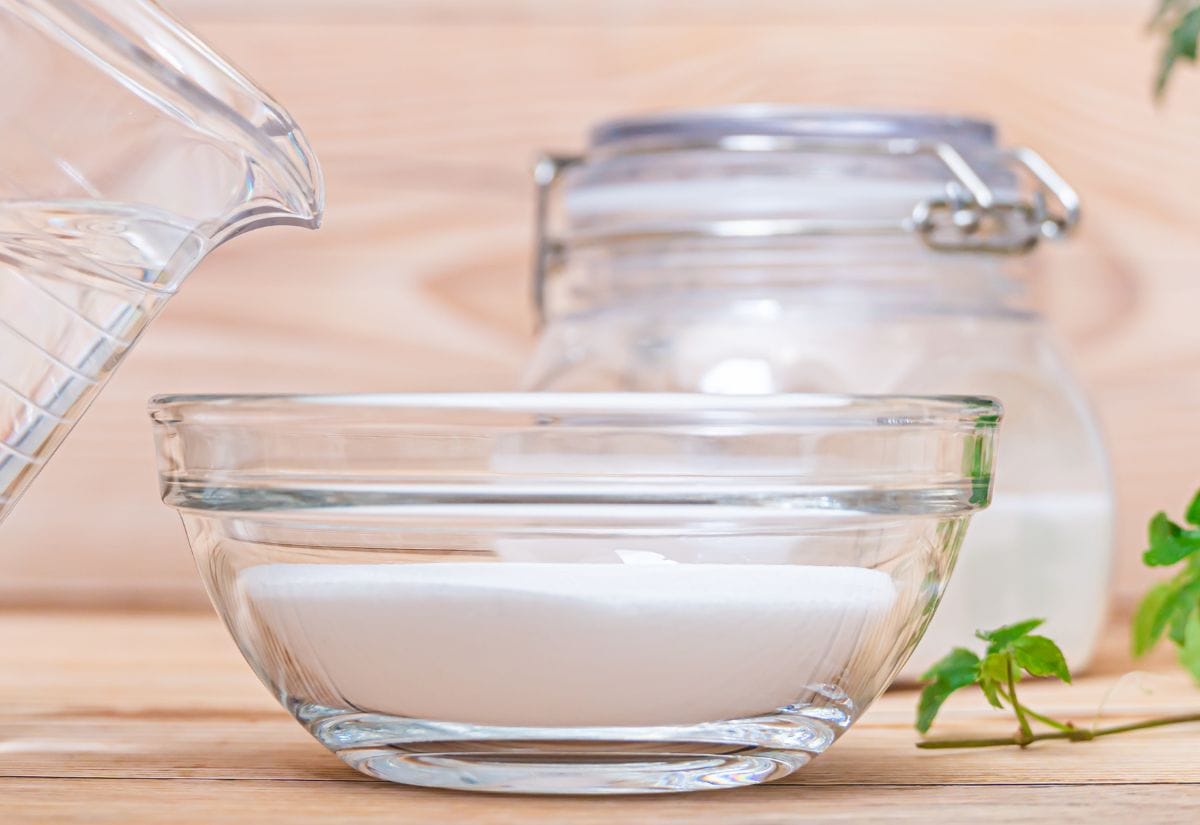
Razor Blades
For stubborn buildup, carefully use a razor blade:
- Ensure the stove is cold.
- Hold the blade flat against the glass and gently scrape residue away.
- Work slowly to avoid scratching the surface.
Commercial Wood Stove Glass Cleaner
If DIY isn’t your thing, Quick N Brite Fireplace Glass Cleaner is a reliable option for removing creosote, soot, and smoke residue. It comes with everything you need, including a sponge and microfiber cloth, making cleanup simple.
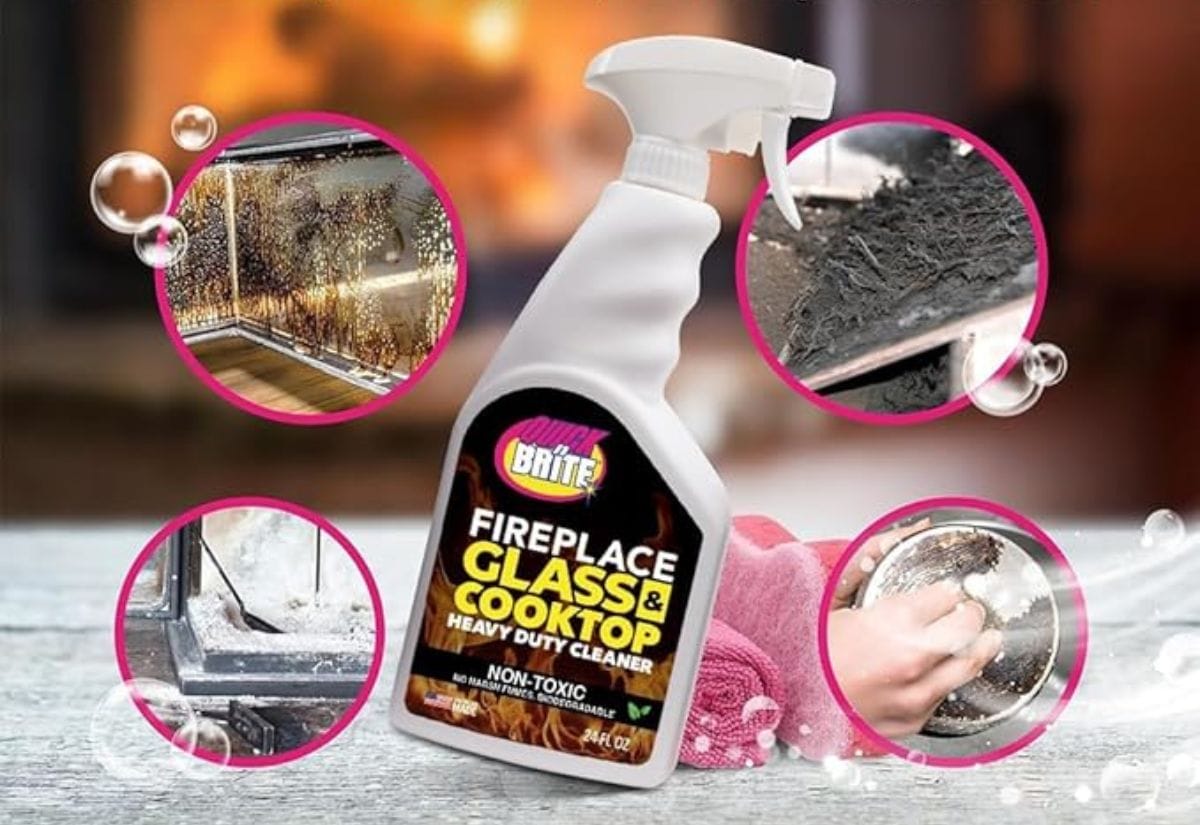
Preventing Wood Stove Glass From Getting Dirty
Keeping your glass clean is as much about prevention as it is about cleaning. Here’s how to reduce buildup:
- Use Seasoned Wood: Stick to properly seasoned hardwoods for cleaner burns.
- Burn Hot Fires: Maintain a stove temperature of at least 1,100°F.
- Leave Some Ash: A 1-inch layer of ash helps fires burn hotter and cleaner.
- Test Your Air Wash: Check the door gasket and replace it if needed.
Your Wood Stove Glass Questions, Answered
Here’s a trick I’ve used for years: After cleaning your glass, wipe it down with a damp cloth and a tiny amount of wood stove glass cleaner. This creates a subtle barrier that makes future cleaning much easier.
Pin this guide to have clean wood stove glass at your fingertips!
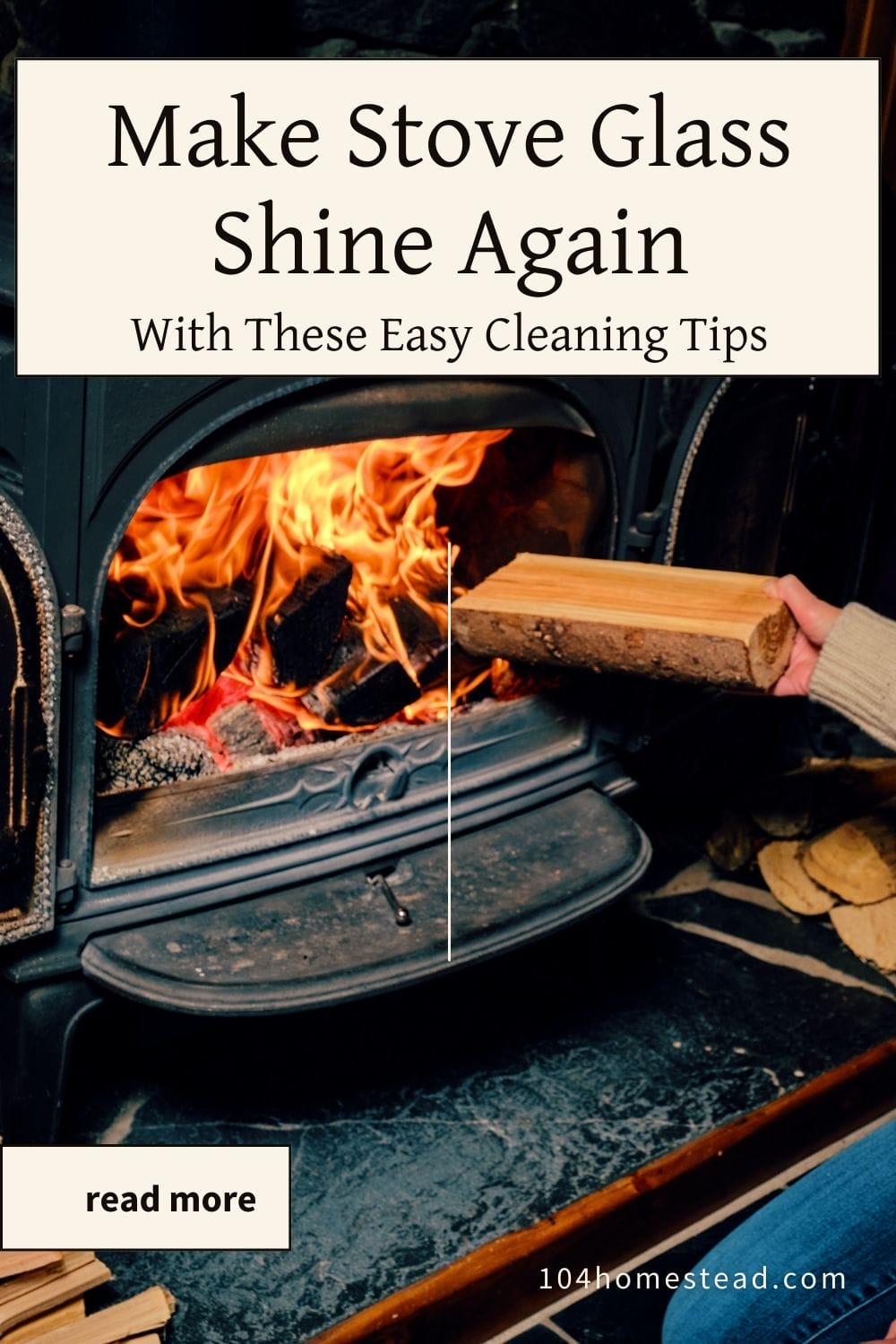
Cleaning your wood stove glass doesn’t have to be a daunting task. With a few simple methods and some preventative measures, you can enjoy a clear view of your fire all winter long. Whether you prefer DIY solutions like wood ash and baking soda or commercial products like Quick N Brite, keeping your glass clean is entirely doable.
If you’re looking to make the most of your wood stove this winter, there are plenty of ways to enhance its performance and efficiency. Discover creative sources for free firewood to keep your stove running without breaking the bank. Learn how to choose the right stove for your home with practical tips, or explore innovative tools like heat-powered fans to maximize heat circulation and comfort. These ideas will help you stay warm and cozy all season long.
What’s your favorite way to keep your wood stove glass spotless? Share your tips and tricks in the comments below—I’d love to hear them!





I can pull the mouse out let alone one dollar bill